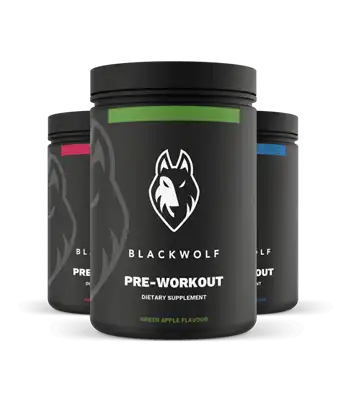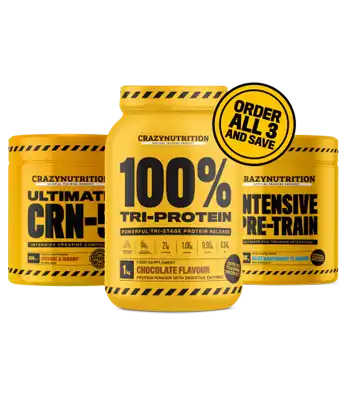What Are Isolation Exercises?
Ever heard someone at the gym talk about “isolating” a muscle? That’s what isolation exercises are all about. These are exercises that focus on working one specific muscle or muscle group at a time. Unlike compound exercises that use multiple muscles together, isolation exercises zero in on a single area.
Think of it like this: if your body is an orchestra, compound exercises are like playing a full symphony, while isolation exercises are like a solo performance by one instrument. Both have their place in a well-rounded fitness routine.
Isolation exercises are great for really feeling the burn in a particular muscle. They help you connect your mind to the muscle you’re working on, which can improve your overall body awareness and control.
Best Isolation Exercises for Every Muscle Group
Let’s break it down and look at some top-notch isolation exercises for different parts of your body. We’ll cover the lower body, upper body, and core, giving you a full-body workout plan.
Best Isolation Exercises for Lower Body
1. Leg Extensions
Benefits: Great for building quad strength and definition. It’s also a good exercise for warming up your knees before leg workouts with weights.
How to Leg Extensions (Video Credit: PureGym YouTube Channel)
How to do it:
- Sit on a leg extension machine with your back against the pad.
- Hook your feet under the padded bar.
- Lift the weight by extending your knees until your legs are straight.
- Slowly lower back to the starting position.
Pro tips:
- Keep your back pressed against the pad throughout the movement.
- Squeeze your quads at the top of the movement for maximum benefit.
- Control the weight on the way down for extra muscle engagement.
Sets and reps: Aim for 3 sets of 10-12 reps.
2. Hamstring Curls
Benefits: Targets the hamstrings, improving leg balance and reducing injury risk. Strong hamstrings are crucial for sprinting and jumping.
Lying Leg Curl (Video Credit: Renaissance Periodization YouTube Channel)
How to do it:
- Lie face down on a hamstring curl machine.
- Hook your ankles under the padded lever.
- Curl your legs up towards your butt, then slowly lower.
Pro tips:
- Keep your hips pressed into the bench throughout the movement.
- Focus on using your hamstrings, not momentum, to lift the weight.
- Try both lying and seated hamstring curls for variety.
Sets and reps: Try 3 sets of 12-15 reps.
3. Calf Raises
Benefits: Strengthens and defines the calf muscles, improving ankle stability and power for jumping.
Hammer Strength Select Standing Calf Raise (Video Credit: Hammer Strength YouTube Channel)
How to do it:
- Stand on the edge of a step or platform, with your heels hanging off.
- Rise up onto your toes as high as you can.
- Lower your heels below the level of the step, feeling a stretch in your calves.
- Repeat.
Pro tips:
- Do these both with straight legs and with slightly bent knees to target different parts of the calf muscle.
- Try single-leg calf raises for an extra challenge.
Sets and reps: Aim for 3 sets of 15-20 reps.
Best Isolation Exercises for Upper Body
1. Bicep Curls
Benefits: Builds bicep strength and size, improving arm appearance and function. Strong biceps help with pulling movements in everyday life.
Bicep Curls — (DUMBBELL FORM & TECHNIQUE) (Video Credit: Fit Father Project – Fitness For Busy Fathers YouTube Channel)
How to do it:
- Stand with feet shoulder-width apart, holding dumbbells at your sides.
- Keeping your upper arms still, curl the weights up towards your shoulders.
- Slowly lower back down.
Pro tips:
- Keep your elbows close to your body throughout the movement.
- Avoid swinging your body to lift the weight.
- Try different hand positions (hammer curls, wide grip) to target different parts of the bicep.
Sets and reps: Start with 3 sets of 10-12 reps.
2. Tricep Pushdowns
Benefits: Strengthens and defines the triceps, crucial for pushing movements. Well-developed triceps contribute significantly to arm size.
ROPE CABLE TRICEP EXTENSION (Video Credit: James Harrison YouTube Channel)
How to do it:
- Stand facing a cable machine with a straight bar attachment at chest height.
- Grab the bar with an overhand grip, elbows at your sides.
- Push the bar down until your arms are fully extended, then slowly return.
Pro tips:
- Keep your upper arms stationary throughout the movement.
- Squeeze your triceps at the bottom of the movement.
- Experiment with different attachments like ropes or V-bars for variety.
Sets and reps: Aim for 3 sets of 12-15 reps.
3. Lateral Raises
Benefits: Targets the lateral deltoids, creating width in the shoulders and improving shoulder stability.
How to Do Side Lateral Raises (with PERFECT FORM) (Video Credit: Andrew Kwong YouTube Channel)
How to do it:
- Stand with dumbbells at your sides, palms facing your thighs.
- Keeping a slight bend in your elbows, raise the weights out to the sides until they’re at shoulder level.
- Lower slowly back to the starting position.
Pro tips:
- Don’t use momentum to swing the weights up.
- Keep your core tight to prevent swaying.
- Try leaning slightly forward for a variation that targets the rear deltoids.
Sets and reps: Start with 3 sets of 12-15 reps.
Best Isolation Exercises for Core
1. Crunches
Benefits: Strengthens the rectus abdominis (six-pack muscles) and improves core stability. A strong core helps with posture and reduces the risk of back pain.
How to Do: ABDOMINAL CRUNCHES (Video Credit: Leap Fitness YouTube Channel)
How to do it:
- Lie on your back with your knees bent and feet flat on the floor.
- Place your hands behind your head, elbows pointing out.
- Lift your shoulders off the ground, bringing your chest towards your knees.
- Lower back down slowly.
Pro tips:
- Focus on using your abs to lift, not your neck or momentum.
- Exhale as you crunch up, inhale as you lower down.
- For an extra challenge, hold a weight plate on your chest.
Sets and reps: Try 3 sets of 15-20 reps.
2. Russian Twists
Benefits: Works the obliques muscle and improves rotational core strength. This exercise helps with sports that require twisting movements.
How To Do Russian Twists For Fitness Beginners!! (Video Credit: John Paul YouTube Channel)
How to do it:
- Sit on the floor with knees bent and feet lifted slightly off the ground.
- Lean back slightly, keeping your back straight.
- Hold your hands together in front of you and twist side to side.
Pro tips:
- Keep your core tight throughout the movement.
- For added challenges, hold a weight or medicine ball.
- Try lifting your feet higher off the ground to increase difficulty.
Sets and reps: Aim for 3 sets of 20 total twists (10 per side).
3. Planks
Benefits: Strengthens the entire core, including deep stabilizing muscles. Improves posture and helps prevent lower back pain.
How To: Plank (Video Credit: ScottHermanFitness YouTube Channel)
How to do it:
- Start in a push-up position but with your forearms on the ground instead of your hands.
- Keep your body in a straight line from head to heels.
- Hold this position, engaging your core.
Pro tips:
- Don’t let your hips sag or lift too high.
- Breathe normally throughout the hold.
- For variety, try side planks or plank reaches.
Sets and reps: Begin with 3 sets of 30-second holds, gradually increasing the duration as you get stronger.
Who Should Do Isolation Exercises?
Isolation exercises can be beneficial for pretty much everyone, but they’re handy for:
- Bodybuilders: These exercises help sculpt and define specific muscles.
- Injury recovery: They allow you to strengthen a particular muscle without straining others.
- Beginners: They’re often simpler to learn than complex compound movements.
- Anyone looking to balance muscle development: If you notice one muscle lagging behind, isolation exercises can help bring it up to speed.
- Athletes in specific sports: Some sports require strength in particular muscles, which can be targeted with isolation exercises.
- Older adults: Isolation exercises can help maintain muscle mass and strength in specific areas, which is crucial as we age.
Isolation Exercises Benefits and Drawbacks
Like any type of exercise, isolation moves have their pros and cons. Let’s break them down:
Benefits
- Target-specific muscles: Great for focusing on areas you want to improve.
- Easier to learn: Often simpler than compound exercises, making them beginner-friendly.
- Useful for rehab: Can help strengthen injured areas without putting stress on others.
- Improve muscle definition: Helps create that “sculpted” look in specific areas.
- Mind-muscle connection: This helps you really feel and understand how a specific muscle works.
- Balancing act: This can help correct muscle imbalances by focusing on weaker areas.
Drawbacks
- Less functional: Don’t mimic real-life movements or compound exercises.
- Time-consuming: Working each muscle separately can take longer than compound moves.
- May lead to imbalances: Overemphasizing isolation can neglect overall functional strength.
- Lower calorie burn: Generally burn fewer calories than compound exercises.
- Limited progression: It can be harder to progressively overload some isolation exercises.
- Potential for overuse: Focusing too much on one muscle group can lead to repetitive strain injuries.
How to Incorporate Isolation Exercises into Your Routine
Now that you know about isolation exercises, you might be wondering how to fit them into your workouts. Here are some tips:
- Use them as finishers: After your main compound exercises, use isolation moves to really fatigue the muscles.
- Create a balanced routine: Mix compound and isolation exercises for a well-rounded workout.
- Focus on weak points: Use isolation exercises to strengthen any lagging muscle groups.
- Warm-up with light isolation: Use light weights to warm up specific muscles before lifting heavier compounds.
- Alternate focus: On some days, focus on compound moves; on others, emphasize isolation exercises.
Remember, the key is balance. Don’t rely solely on isolation exercises, but don’t neglect them either.
 Conclusion: Putting It All Together
Conclusion: Putting It All Together
So, there you have it – your complete guide to isolation exercises! Let’s wrap things up with some points:
Key points
- Isolation exercises are all about focusing on one muscle at a time. They’re like giving each part of your body its own special workout.
- Whether you’re looking to build muscle, recover from an injury, or just mix up your routine, isolation exercises can be super helpful.
- Remember, it’s not an either-or situation. The best workout plans usually mix isolation exercises with compound movements. It’s like having a balanced diet, but for your muscles!
- Start small and work your way up. It’s better to do an exercise right with light weights than to struggle with heavy ones and risk injury.
- Listen to your body. If something doesn’t feel right, take a step back and check your form or ask a pro for help.
- Don’t forget about rest! Your muscles need time to recover and grow stronger between workouts.
- Have fun with it! Try different exercises, challenge yourself, and enjoy the process of getting stronger and healthier.
At the end of the day, the best gym exercise routine is one that you enjoy and can stick with. Isolation exercises are just one tool in your fitness toolbox. Use them wisely, mix them up with other types of exercise, and you’ll be on your way to reaching your fitness goals.
Everyone’s fitness journey is different. What works for one person might not work for another. So don’t be afraid to experiment and find what works best for you. And as always, if you’re unsure about anything, it’s a good idea to chat with a fitness professional or your doctor.
Keep at it, stay consistent, and before you know it, you’ll be isolating muscles like a pro! Here’s to your health and fitness journey – you’ve got this!








